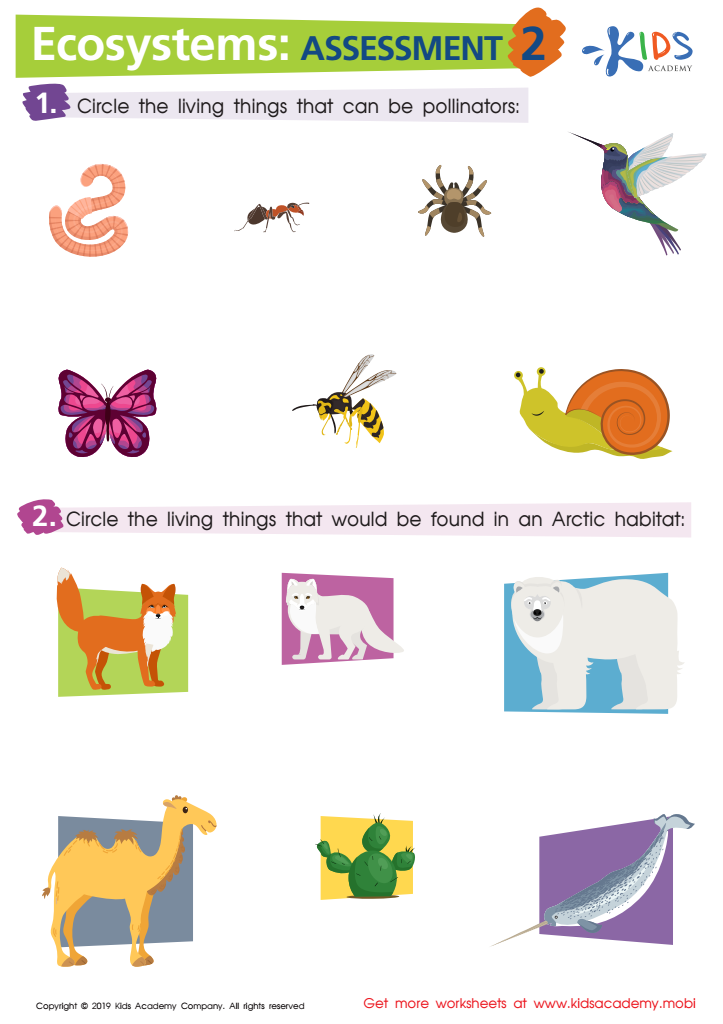Recognizing energy flow Worksheets for Kids
1 filtered results
-
From - To


Ecosystems: Assessment 2 Worksheet
Question/Answer
Why is the Recognizing energy flow skill important for Grade 2 students?
The Recognizing energy flow skill is important for Grade 2 students as it lays the foundation for understanding basic scientific concepts related to energy. It helps them grasp how energy moves and changes form, fostering curiosity about the world around them. This early awareness encourages critical thinking and problem-solving skills, essential for their future learning in science and other subjects.
How does the mastery of the Recognizing energy flow skill affect a student's performance at an early age?
The mastery of the Recognizing energy flow skill at an early age positively impacts a student's performance by enhancing their understanding of physical and biological processes. This foundational knowledge improves their analytical and critical thinking skills, fostering a deeper comprehension of science concepts, which contributes to academic success and encourages curiosity and a lifelong interest in learning.
What are some effective activities to train students’ Recognizing energy flow skill when teaching them about Plants and Animals?
Effective activities include creating energy flow diagrams or food chains/webs, engaging in simulations or games that mimic predator-prey interactions, designing experiments to observe photosynthesis and respiration, analyzing ecosystems through case studies or field trips, and constructing models to demonstrate energy transfer through trophic levels. These hands-on activities help students visualize and understand energy flow within ecosystems.
 Assign to the classroom
Assign to the classroom












